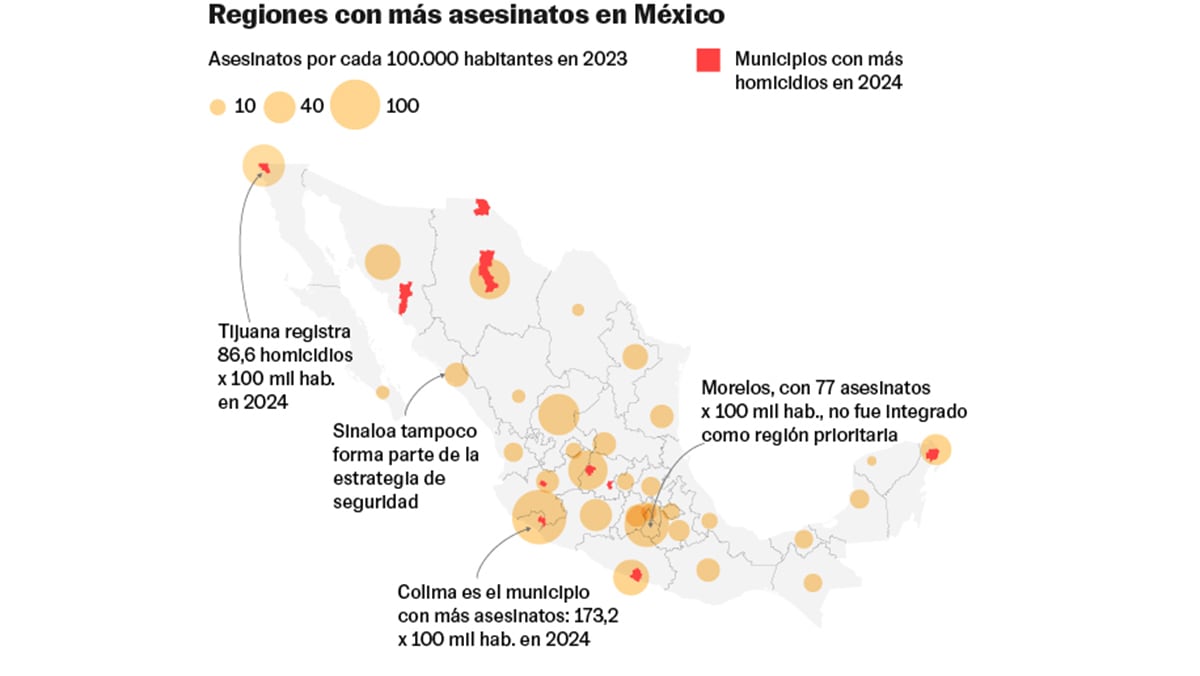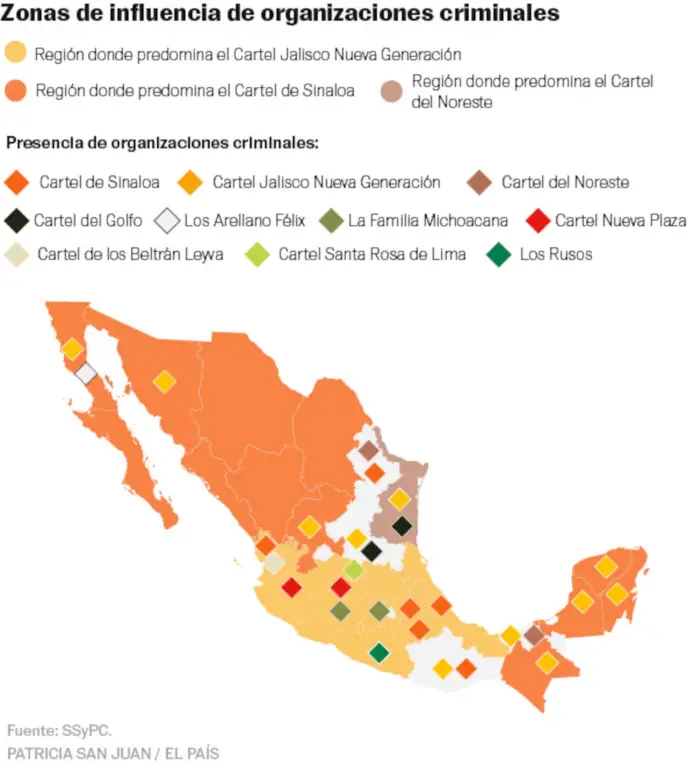
There is no respite from insecurity in Mexico. Every week there are new fires that force the transfer of troops, as in Guanajuato or Sinaloa these days, a way of containing the flames, but not of putting out the fire, which has been burning for so many years. The last three governments, each headed by a different party, have bet precisely on that, containment and military deployment, with small surgical adventures of a police nature, with questionable results, such as the attack by the Government of Felipe Calderón (2006-2012) against Los Zetas, in the final years of his six-year term.
A new Government is now beginning which, although it seems to be subscribed to the same military logic, will propose solutions beyond containment, as the cabinet has reported these days, elevating investigative and intelligence surgery to State policy. This will occur in a context in which the Armed Forces have become the only police corporation in the Federation, via constitutional reform. The National Guard will depend on the Army, despite protests from the opposition and activists. A few days ago, the shooting death of six migrants in Chiapas, who were trying to escape from a checkpoint, fueled the great controversy of recent years.
Pacification, territorial control and integration of the National Guard: the security challenges that mark the arrival of Sheinbaum
The president, Claudia Sheinbaum, thus faces one of the greatest challenges of her mandate, which has just begun. The country has recorded more than 30,000 murders a year for the past eight years, extortion has become common practice in large regions of the country. The fights between groups for control of territories go beyond the case of Culiacán and Sinaloa: they can break out anywhere. The crisis is serious and long-standing. To deal with all this, the president has placed Omar García Harfuch, her police chief when she led the capital’s government from 2018 to 2023, at the head of the Secretariat of Security and Citizen Protection (SSyC).
Despite the doubts of some sectors of Morena due to his past, the figure of García Harfuch generates a kind of consensus right now. Weak, if you will, depending on what happens in the coming months, and on his ability to coordinate his area with the Armed Forces, local police and prosecutors, and the federal prosecutor’s office. Harfuch will have the collaboration of the National Intelligence Center (CNI), which will be directed by his former collaborator, Francisco Almazán Barocio.
From the security agencies of Mexico City, she has also brought back Omar Reyes, who headed the penitentiary intelligence unit in the capital, created by Harfuch. She also takes Francisco Moreno, who until a few weeks ago was the Undersecretary of Transit, and Marcela Figueroa, who will lead the Executive Secretariat of the National Public Security System, a key tool for the development of the capacities of local police and prosecutors, among other issues. Harfuch will also have a few thousand police officers, who leave the National Guard after moving to the Ministry of Defense, and will remain assigned to the SSyPC.
Sheinbaum will officially present her security plan this Tuesday, although it is already clear where it will go. The president said in her first days that they would present “some initiatives, especially to strengthen intelligence and investigation.” In a document leaked a few weeks ago, which includes the main lines of the plan, the creation of a “Subsecretariat of Intelligence and Police Investigation” and an effort to “reactivate intelligence in the Penitentiary System” and “strengthen” the CNI appear. Assuming that Reyes will go to the penitentiary system and Barocio to the CNI, it remains to be seen who will lead the new undersecretary.
The leaked document, titled Security Strategy for the First 100 Days, sets the goal of intervening in 10 cities and two areas, Tijuana, León, Celaya, Acapulco, Cancún, Ciudad Juárez, Chihuahua, Cajeme, Tlajomulco and Colima, in addition to the lemon-growing area of Michoacán and different points in Chiapas. To do so, the SSyPC will lead the formation and direction of ten task forces, including military, marine and secretariat personnel. In this strategy, the implementation of a new highway security strategy appears as a fundamental axis, an issue that Francisco Moreno could be in charge of.
Sinaloa does not appear as a priority in the document, despite the three weeks of violence that the State, mainly Culiacán, has experienced. This Saturday, the governor, Rubén Rocha, was scheduled to meet with García Harfuch to discuss the situation. Nor do territories with a high murder rate appear, such as Morelos, which has more than 70 per 100,000 inhabitants. The speed of the outbreak of violence makes diagnoses quickly obsolete. The challenge for the new government is to work, with precision, at the speed of light.
Source: elpais






